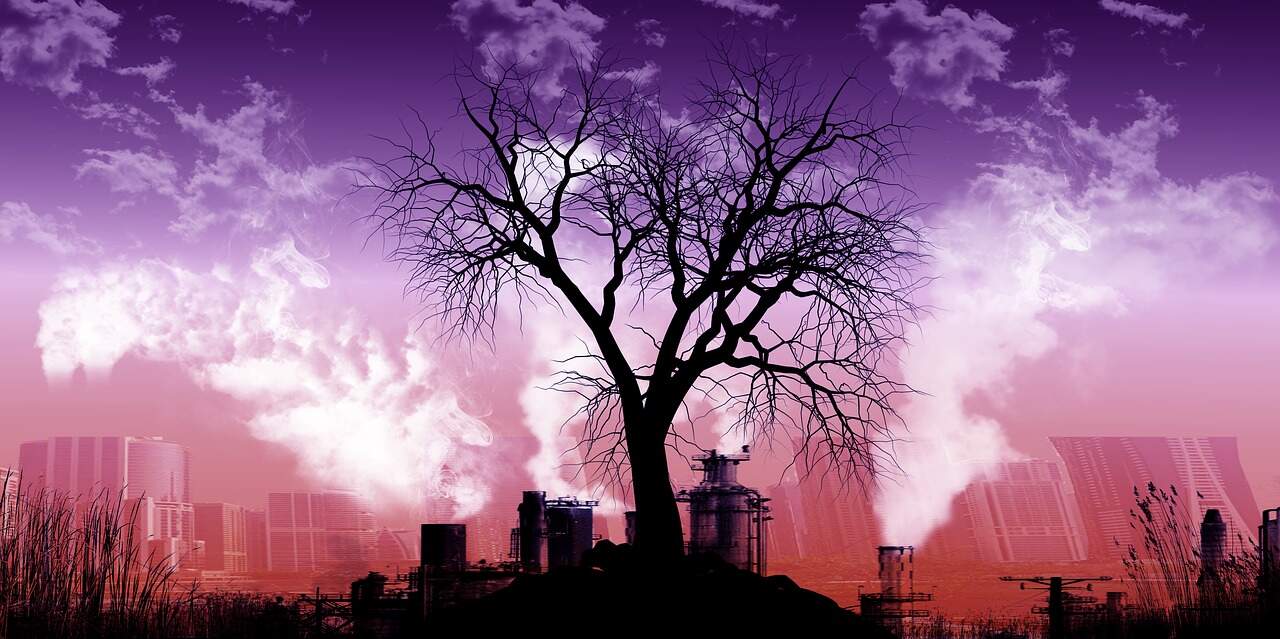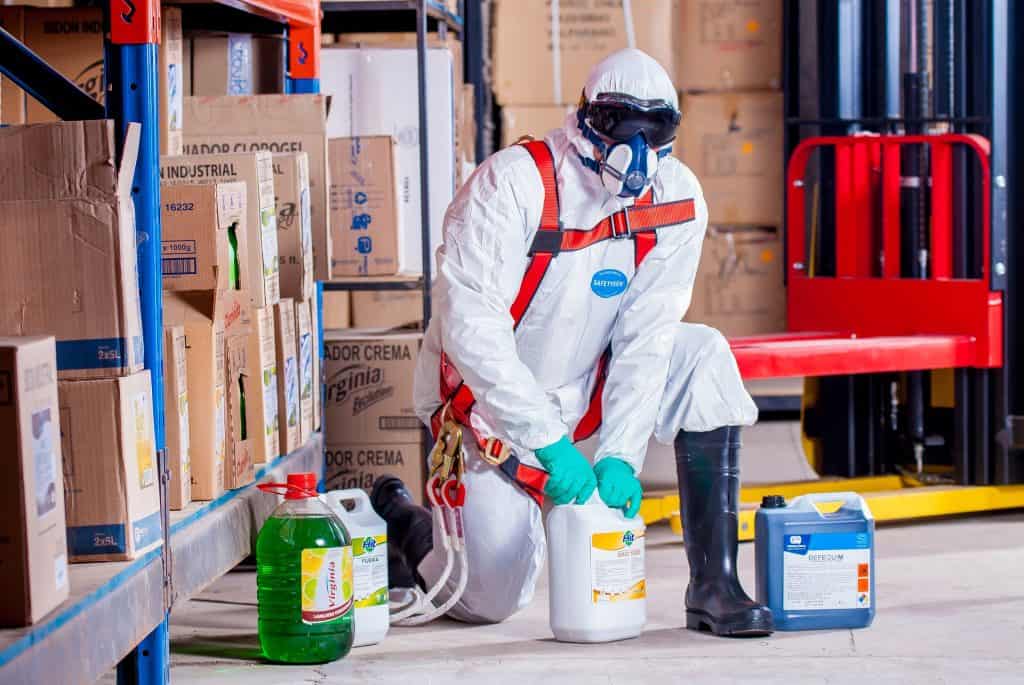Environmental factors that affect human health

Environmental factors that affect human health
Environmental factors affect all people of the world including animals, plants and insects as well.
This article covers just some of the obvious issues that we can see from the naked eye, though the toxins that we create today go all the way down to the micro and macro levels and end up back in the food chain, which we consume eventually. This effect creates further health issues for all that swim, walk or fly on this planet.
Why Is Environmental Health Important?

Environmental health is about how we interact with our surroundings. It involves people, places, and things. It’s about where we live, work, play, learn, shop, eat, drink, and breathe. It’s important because it affects us all, even those who don’t think about it.
We all benefit from good environmental health. Our communities are healthier, our air is cleaner, and our water is safer. But there are many ways in which environmental health isn’t working well. Pollution levels are high, access to healthy food is limited, and climate change continues to affect our planet.
The goal of environmental health is to make sure that everyone benefits from good environmental health. This includes protecting human health, ensuring clean air and water, preserving natural resources, and creating sustainable environments.
How Environmental Factors could affect Personal Health and Increase the Risk of Chronic Diseases
Climate change may result in new viruses and bacteria. Industrial pollution can cause cancer, asthma, heart disease, birth defects, skin rashes and even premature death. The World Health Organization estimates that air pollution causes about 7 million deaths per year worldwide.
In addition to environmental factors like climate change and industrial pollution, there are many personal lifestyle choices you can make to improve your health. For example, smoking cigarettes increases your risk of lung cancer, while eating healthy foods reduces your chances of developing diabetes.
Environmental Hazards are Community Health Issues
The term environmental health refers to the study of how our environment affects human health. This includes factors such as air quality, water quality, food safety and waste management. These issues are often considered together because they impact each other, and they can cause illness or death.
Healthy communities are important for everyone. They provide opportunities for families to interact and play outside, enjoy nature, and connect with friends and neighbours. A healthy community helps children learn about nutrition, physical activity, and good hygiene practices. Families and individuals can take steps to protect themselves against disease and injury. Communities can work together to improve access to safe drinking water, clean air, and nutritious foods.
Environmental Hazards That Can Impact Your Health
Air pollution causes lung cancer, cardiovascular disease, and chronic obstructive pulmonary disease. Chemical pollutants cause respiratory problems such as asthma, bronchitis, and emphysema. Climate change affects people’s health through increased exposure to heatwaves, drought, flooding, hurricanes, tornadoes and other extreme weather events, according to the World Health Organization (WHO).
1. Chemical Safety
Chemical safety is an important part of our everyday life. We use chemicals every day to make products like food, clothing, furniture, electronics, toys, cleaning supplies, cosmetics, pharmaceuticals, paints, plastics, rubber, paper, textiles, and much more. Some chemicals are used safely; others cause serious problems. This video explains what public health officials do to protect us from harmful chemicals.
OSHA provides information about chemical hazards in the workplace. They regulate workplaces where workers handle toxic substances. Their goal is to keep everyone safe from exposure to dangerous chemicals.
What Are Chemicals?
A chemical is anything that changes the properties of something else. For example, water is H20. When you add salt to it, it becomes salty water. Sugar is sugar no matter how you mix it up. But there are lots of things that change depending on how you mix them together.

How Do you Know If A Product Contains a Dangerous Chemical or Chemicals?
You might think that everything sold in stores contains dangerous chemicals. Unfortunately, some companies hide the truth. To find out if a product contains dangerous chemicals, check the ingredients list. Many manufacturers post their ingredient lists online. You can also call the manufacturer and ask. Another way to know if a product contains dangerous substances is to look up the product name online. People often post reviews about products they don’t want to buy. Read those reviews carefully.
Why Is Chemical Safety Important?
Our bodies are made up of trillions of cells. Cells need certain chemicals to grow and function. Our organs and tissues contain special chemicals called hormones. Hormones help control many parts of our body. These include:
– The brain and nervous system
– The heart, blood vessels, muscles, bones, glands, skin, hair follicles, sweat glands, eyes, ears, nose, mouth, teeth, pancreas, liver, spleen, stomach, intestines, kidneys, bladder, reproductive organs, lungs, breasts, thyroid gland, parathyroid gland, adrenal gland, pituitary gland, lymphatic system, immune system, skeletal muscle, fat tissue, bone marrow, skin, connective tissue, and blood.
What About BPA In Food Packaging?
Bisphenol-A (BPA) is found in plastic food packaging. It’s a synthetic hormone that may be linked with cancers, obesity, diabetes, and early puberty in children. BPA has been banned in Europe since 2010 and Canada since 2012. BPA is still allowed in the U.S., though. Labelling laws have helped cut down on its use by at least 90%. Companies are now looking for safer alternatives. Scientists are working hard to replace this chemical. Other countries aren’t waiting! More than 30 other nations have passed or proposed legislation to ban BPA.
What Can I Do To Protect Myself From Harmful Chemicals?
The first thing you can do is learn as much as possible. Find out what kinds of chemicals are used in your area. Learn about the potential dangers of each one. Look up any new products before buying them. Avoid using products that contain harmful chemicals. Use personal protective equipment when handling hazardous materials. Wear gloves, goggles, and lab coats. Wash hands after touching chemicals. Don’t eat or drink while working around chemicals. Keep pets away from work areas. Be careful not to breathe dust or fumes.
Where Can I Get Help With Chemicals?
If you’re worried about chemicals in your home or workplace, contact your local poison control centre. They will tell you where to get more information.
Are There Any Good Alternatives To Toxic Chemicals?
Yes! There are plenty of safe, natural ways to clean your house, care for your family, and protect yourself from toxic chemicals. Here are just a few ideas:
– Make your own cleaning supplies instead of buying store-bought ones.
– Buy organic foods whenever possible.
– Use baking soda instead of commercial cleaners.
– Try vinegar instead of bleach.
– Essential oils instead of toxic air fresheners.
2. Air Pollution

Air pollution affects millions of people globally. One out of three deaths is caused by indoor air pollution. Indoor air pollution is far worse than outdoor air pollution because it is usually produced indoors. Even though there are many different types of air pollutants, indoor air pollution is mainly caused by combustion products such as carbon monoxide, nitrogen oxides, volatile organic compounds, particulate matter, sulphur dioxide, and lead. These chemicals cause respiratory diseases like asthma, bronchitis, emphysema, pneumonia, lung cancer, cardiovascular disease, and even death. In addition, poor indoor air quality reduces workers’ productivity and lowers worker morale.
Indoor air pollution kills hundreds of thousands of children under 5 every year. Children breathe faster than adults, especially during early childhood, and inhale more particles per breath. This makes them particularly vulnerable to the harmful effects of air pollution. They spend most of their waking hours inside the home where they play and sleep. Their lungs are still developing and growing, making them more susceptible to damage from air pollution.
More people die each year from strokes caused by air pollution than from heart attacks or cancer. Stroke is a leading killer among working-age adults. People who suffer from stroke often lose their ability to speak, walk, feed themselves, read, write, or do simple tasks. Many others experience long-term disabilities including paralysis, loss of vision, memory problems, and cognitive impairments.
Industrial pollutants affect air quality in our workplaces. Industrial emissions include gases like carbon monoxide, sulphur dioxide, nitrogen oxide, and mercury; heavy metals like arsenic, cadmium, chromium, copper, nickel, lead, manganese, molybdenum, selenium, silver, thallium, tin, vanadium, zinc, and zirconium; and radioactive elements like radon gas. These substances can be found in factories, power plants, refineries, chemical plants, incinerators, waste treatment facilities, smelters, mines, and other industrial sites.
The World Health Organization estimates that over 3 million premature deaths occur annually due to exposure to hazardous substances in the environment. The WHO also reports that approximately 2.5% of all cancers worldwide are attributable to environmental exposures.
Importance of Indoor Air Quality
Indoor air quality affects our overall health and well-being. There are many different kinds of indoor air quality problems, including airborne particles, mould, mildew, bacteria, viruses, radon gas, carbon monoxide, volatile organic compounds (VOCs), formaldehyde, tobacco smoke, cooking fumes, cleaning products, pesticides, chemicals, odours, dust mites, allergens, and even electromagnetic fields.
These pollutants can cause respiratory issues, headaches, nausea, fatigue, skin rashes, asthma attacks, eye irritation, dizziness, and depression. They can also trigger allergic reactions, such as eczema, hay fever, and sinusitis. Negative health effects can be reduced with indoor plants, ventilation systems, proper lighting, and good housekeeping practices. some plants can absorb VOCs and reduce the amount of these pollutants in your home.

Airborne Particles
Particulates are tiny solid or liquid particles suspended in the air. They come in two main forms: aerosols and gaseous molecules. Aerosols are small enough to remain suspended in the air for an extended period. Gases are larger and heavier than aerosols and tend to settle out quickly. Some common types of particulate matter include pollen grains, soot, dust, smoke, and mould spores.
Mould
Mould is a type of fungus that grows on damp surfaces. It produces microscopic spores that float through the air and land on objects. When the spores land on moist surfaces, they germinate into colonies of mould. Moulds produce toxins called mycotoxins which may irritate the eyes, nose, throat, lungs, liver, kidneys, and central nervous system. In addition, they can cause allergies, asthma, and hypersensitivity pneumonitis.
Bacteria
Bacteria are single-celled organisms that live naturally in soil, water, and food. Bacterial contaminants can enter homes through plumbing leaks, insect bites, contaminated food, and dirty hands. Common bacterial contaminants include E. coli, salmonella, listeria, staphylococcus, streptococcus, and pseudomonas.
Viruses

Viruses are very small infectious agents that do not contain DNA or RNA. They reproduce by attaching themselves to cells and using them to make more copies of themselves. Most viruses cannot survive outside their host cell. However, some viruses can survive outside of their hosts for short periods. Examples of viruses that can survive outside of their host cells include rhinovirus, influenza virus, herpes simplex virus, adenovirus, and cytomegalovirus.
3. Rapid Climate Change increases the frequency of Natural Disasters
Climate change affects humans through increased hot temperatures, flooding, storms, drought, fires, and other extreme weather conditions. These changes can cause an increased incidence of certain diseases, such as heart disease, asthma, and diabetes, among others. There are many different effects that climate change has on our environment, which could lead to illness or even death. Some examples include sea level rise, ocean acidification, melting ice caps, coral bleaching, and species extinction.
There are many different ways that climate change impacts human health. For example, there is a correlation between climate variability and natural disaster risk. This means that we should expect to see more frequently occurring and more severe natural disasters due to global warming. In addition, some studies show that it is possible for people living near coastal areas to experience negative health outcomes because of rising seas.
The Intergovernmental Panel on Climate Change (IPCC), a United Nations body established in 1988, has been studying the connection between climate change and health since 1990. Their findings suggest that climate change will likely lead to an increase in the frequency and severity of natural disasters. They also indicate that it will impact public health negatively.
4. Illness & Diseases Caused by Microbes
There are trillions of microbes living within us. These microorganisms help keep us alive — they support our digestion, immunity and other vital functions. But diseases caused by microbes include food poisoning, tetanus, and Botulism.
Some of the most common types of bacteria found in humans include E. coli, streptococcus, staphylococcus, salmonella, listeria, and Shigella. Bacteria can live in water, soil, plants, animals, and humans.
Germs cause many different kinds and types of infections. Some germs can even withstand extreme conditions such as heat, cold, radiation, and pressure.
Many people think that eating healthy foods will prevent illness. This isn’t true. Even though you may eat healthily, some germs will still find their way into your body.
There are many treatments for these infections, including antibiotics, antiseptic creams, probiotics, and vaccines.
5. Difficulty to access Health Care
Lack of access to affordable health care increases the risk of people developing certain chronic diseases such as diabetes, heart disease, stroke, cancer, asthma, mental illness, arthritis, obesity, and depression.
Individuals without insurance coverage often delay receiving needed medical treatment until symptoms become severe. This leads to longer hospital stays and increased costs to treat patients.
Without regular screening tests and preventive measures, many people do not realize they have been exposed to harmful substances like asbestos, lead, mercury, benzene, formaldehyde, arsenic, and radon gas. These exposures increase the risk of developing serious illnesses later in life.
People with limited access to health care are also less likely to seek out preventative treatments and vaccinations. This puts them at greater risk of contracting infectious diseases like influenza, measles, mumps, rubella, chicken pox, hepatitis A, tuberculosis, diphtheria, polio, tetanus, pertussis, meningitis, shigellosis, typhoid fever, and malaria.
6. Infrastructure Issues

Poorly maintained roads increase the risks of car accidents. A lack of access to clean drinking water increases the risk of chronic disease. Social factors such as lacking local healthcare infrastructure decreases the ability to provide preventive measures against diseases.
7. Environmental Factors that Affect our Health and Poor Water Quality
More than 780 million people around the globe don’t have access to clean drinking water. This lack of access leads to high rates of illness and death. Most of these deaths occur among young children under five years old.
Poor sanitation services contribute to poor water quality. These include inadequate waste disposal systems, contamination of surface waters, and improper use of toilets. Low-cost water filtration is not always effective at removing contaminants from water sources. In many developing countries, the cost of providing safe water and adequate sanitation is too expensive. For example, it can cost up to $1,000 per person per year to install an improved toilet facility.
The World Health Organization (WHO) estimates that more than 1 billion people lack access to improved drinking water supplies.
8. Social Factors that Affect our Health
Social determinants of health are defined as the social and environmental factors outside of individual control that impact overall health. These factors include access to healthy food, safe housing, education, employment opportunities, and supportive communities.
In addition to these social determinants, many other factors contribute to health disparities among different populations. For example, people living in poverty face barriers to accessing healthcare because they lack insurance, transportation, childcare, and stable housing. In turn, this leads to increased rates of chronic illnesses such as diabetes, asthma, and cardiovascular diseases.
People who live in areas with high levels of air pollution tend to experience poorer respiratory health, especially those with existing conditions such as COPD and asthma. This is because air pollutants can trigger acute episodes of bronchoconstriction, increase mucus production, and worsen symptoms in patients with underlying lung disease.
9. Ultraviolet (UV) Rays

Sunlight contains ultraviolet light waves that are invisible to our naked eye. These wavelengths of light cause damage to human cells and DNA, leading to premature aging and cancer. If you spend a lot of time outdoors, this can be a health risk, so it’s important to protect your skin from harmful UV rays.
The best way to do this is to use sunscreen every day. Sunscreens contain chemicals that absorb the energy coming from the sun and convert it into heat. This prevents the sunlight from reaching your body and causing harm.
You should use sunscreen on your face, ears, neck, shoulders, arms, hands, lips, feet, and genitals. You should put sunscreen on for 15 minutes before heading out the door and reapply often throughout the day.
10. Noise
Noise is everywhere. It’s part of our daily lives. But there are ways we can reduce noise exposure without having to turn down the volume.
Hearing protection helps protect against noise-induced hearing loss. And protecting ourselves from noise is essential to living a healthy lifestyle.
Noise is unavoidable but there are things we can do to minimize its effects.
Protecting yourself from noise is important because it can affect your ability to hear warning signs like sirens and alarms and enjoy the finer things in your life.
If you experience hearing problems, you might notice some symptoms such as tinnitus, dizziness, ringing in the ears, or difficulty understanding speech. These symptoms could indicate a problem with your hearing, and it’s important to see your doctor.
11. Solar radiation and Environmental Factors
UV radiation is one of the most common sources of energy on Earth. It is responsible for almost half of the total amount of energy received by living organisms. Solar radiation is composed of different wavelengths, each of which has a specific effect on living organisms. Ultraviolet light (UV), visible light, infrared radiation, microwaves, radio waves, X-rays, gamma rays, etc., are all types of electromagnetic radiation emitted by the sun. These radiations interact with molecules and atoms within the body and cause chemical reactions. They can even break down the genetic material in cells.
The human skin absorbs about 95% of ultraviolet B (UVB) radiation. This type of radiation is harmful because it damages the skin and increases the risk of cancer. Sunlight contains both UVB and UVA radiation, but our eyes are very good at filtering out UVA radiation. However, we cannot filter out UVB radiation completely. Therefore, people who spend a lot of time outdoors without sunscreen are exposed to high levels of UVB radiation.
Sunscreen protects against UVB radiation. It works by absorbing the damaging rays and preventing them from reaching the surface of the skin. There are many kinds of sunscreen products available
12. Nutrient availability
There are three main nutrients that bacteria require for growth and reproduction: carbon, nitrogen, and phosphorus. These elements play different roles in cellular processes, including energy production, protein synthesis, DNA replication, and membrane formation. Bacteria use the same metabolic pathways to obtain these elements as plants do, but the process is much simpler because there are fewer steps involved. In addition, some species of bacteria can recycle certain elements within themselves, while others must scavenge them from the environment. Nutrient deficiency normally leads to poor health outcomes and adverse health effects and possibly the early onset of chronic disease. Below is further information on the main nutrients for bacteria and soils for healthy plant growth.
Carbon
Carbon is used for many purposes in cells, including building proteins, making carbohydrates, and generating ATP. There are several ways that bacteria acquire carbon, including photosynthetic reactions, respiration, fermentation, and chemosynthesis. Photosynthetic organisms such as cyanobacteria and algae convert sunlight into chemical energy via light-driven electron transport chains. During respiration, bacteria reduce oxygen to water and release it into the atmosphere. Fermentation occurs naturally during the breakdown of sugars and starches. Chemosynthesis refers to the creation of chemicals from carbon dioxide and hydrogen gas. Some bacteria use acetate or ethanol as a source of carbon.
Nitrogen
The most abundant element found in living things, nitrogen is needed for amino acids, enzymes, and nucleotides. Amino acids are the building blocks of proteins; enzymes help catalyse biochemical reactions, and nucleotides form the genetic material DNA. Bacteria obtain nitrogen primarily through nitrate reduction, ammonia assimilation, and urea hydrolysis. Nitrate reduction involves the conversion of nitrate ions into ammonium ions. Ammonia assimilation entails converting ammonia into glutamine and glutamate. Finally, urea hydrolysis converts urea into ammonia and carbon dioxide.
Phosphorus
Phosphorus is necessary for phospholipids, adenosine triphosphate (ATP), and DNA. Bacteria obtain phosphorus from phosphate esters, polyphosphate granules, and organophosphorus compounds. Organophosphorous compounds contain one or more phosphoryl groups attached to oxygen atoms. Phosphate esters consist of a phosphate group bound to an alcohol or carboxylic acid molecule. Polyphosphate granules are large clusters of phosphate molecules linked together.
Potassium
Bacteria need potassium for cell membranes, enzyme activation, and osmotic balance. Potassium is also important for maintaining proper fluid levels inside and outside of cells. The concentration of potassium in the body depends on how much sodium is present. When too much sodium enters the body, the kidneys excrete excess salt and retain potassium. This causes the blood pressure to rise. If too little sodium is present, the kidneys cannot remove enough salt, which leads to dehydration. To prevent this, the body retains potassium by increasing its uptake from food sources.
Calcium
Essential for bone development, muscle contraction, nerve function, and blood clotting. Calcium is also required for healthy teeth and bones. It is obtained from foods containing calcium, such as milk, cheese, yogurt, and leafy green vegetables. Bacteria can absorb calcium directly from the soil or indirectly from other microorganisms. For example, some species of bacteria live in symbiotic relationships with plants. These bacteria provide nutrients to their host plant, which then provides these nutrients to the bacteria. In return, the bacteria protect the plant from pathogens.
Sulphur
Needed for protein synthesis, coenzymes, and amino acids. Bacteria obtain sulphur from sulphate salts, elemental sulphur, and thiosulfates. Elemental sulphur consists of pure sulphur crystals. Thiosulfates are organic compounds containing sulphur and oxygen. They are produced when sulphur reacts with certain organic compounds.
Iron
Vital for hemoglobin production, immune system function, and cellular respiration. Iron is also involved in many enzymatic processes. Some bacteria obtain iron from ferrous iron, while others use heme-containing compounds. Ferrous iron is found in animal tissues and is released during digestion. Heme-containing compounds are used by bacteria to produce energy.
Manganese
Required for ATP formation, electron transport, and antioxidant protection. Manganese is also important for bone growth and maintenance. Bacteria obtain manganese from various minerals, including pyrolusite, goethite, and siderite. Pyrolusite is a mineral composed of manganese, iron, aluminium, silicon, and oxygen. Goethite is a compound consisting of iron and oxygen. Siderite is a mineral formed when iron combines with oxygen.
Zinc
Needed for enzymes, wound healing, and hair growth. Bacteria obtain zinc from zinc oxide, zinc carbonate, and zinc sulphide. Zinc oxide is a white powder that occurs naturally in rocks. Zinc carbonate is a solid material made up of zinc and carbon dioxide.
Copper
An element that plays a role in many metabolic reactions. Copper is also necessary for the structure of proteins, DNA replication, and the activity of several enzymes. Bacteria obtain copper from copper sulphate, copper chloride, and copper hydroxide.
Selenium
Essential trace element that helps maintain normal thyroid function, reproductive organs, and skin integrity. Selenium is also involved in the body’s defence against cancer. Selenium is present in small amounts in most soils and is added to commercial fertilizers. The selenium content of soil varies widely depending on the type of soil. The amount of selenium available to plants depends on how much selenium is already present in the soil.
Boron
An essential nutrient that is needed for bone growth, cell division, and reproduction. Boron is also needed for the proper functioning of the nervous system. Bacteria obtain boron from boric acid, borate minerals, and borax. Boric acid is a colourless crystalline compound that can be found in some foods such as bread, cereals, and meats. Borate minerals include sodium borate, calcium borate, magnesium borate, potassium borate, and lithium borate. Borax is a salt of boric acid. It is commonly used as a cleaner because it removes grease and oil stains.
Chromium
Chromium is required for healthy blood sugar levels, insulin metabolism, and cholesterol synthesis. Bacteria obtain chromium from chromic phosphate, chromium(III) oxide, and chromium(VI) oxide. Chromic phosphate is a chemical compound that consists of chromium and phosphorus. Chromium(III) oxide is a black powder that contains chromium and oxygen. Chromium(VI) oxide is a brownish-black powder that contains chromium, oxygen, and hydrogen.
11. Environmental exposure, Climate Change and Health Effects

Environmental issues such as water contamination, air pollution, soil degradation, climate change, biodiversity loss and species extinction are caused by many different factors. Some of these factors include hazardous substances and toxic waste sites, indoor air pollution, outdoor air pollution, radioactive materials, chemical pollution, water pollution, landfills, agricultural runoff, mining wastes, industrial emissions and oil spills.
These problems are often associated with human activities like agriculture, industry, energy production and consumption, transportation, construction, waste management, urbanization, population growth and development, among others.
Even though we rarely consider it, climate change can cause respiratory issues like asthma attacks and lung cancers. So let’s take a look at how climate changes impact human well-being.
12. What are the practical ways to minimize the negative environmental impact?
Planting trees will help reduce carbon emissions, use fewer cars, which will decrease air pollution, renewable energy sources such as solar and wind power will lessen our reliance on fossil fuels, and recycling will help conserve resources.
But what about the trees themselves? Do they make a difference in reducing greenhouse gas emissions or do they just add to the problem by taking up space that could be used for other things?
The answer is yes, but only if you plant them correctly. The right tree cay helps us fight climate change.
Trees are not just pretty plants with leaves. They also have an enormous impact on the environment. Trees account for approximately one-third of all oxygen produced on Earth. That’s why planting trees is so important!
Trees absorb carbon dioxide from the atmosphere and release oxygen back into the air. When we talk about “carbon” we’re talking about the element Carbon, which makes up over 80% of the mass of every living thing on earth. It’s found in almost everything: the ground beneath your feet, the air around you, the food you eat, the water you drink, and the paper you read.

Scientist’s, biologist’s and Public health officials are currently working on ways to reduce the negative impact on the environment and reduce the health effects on us all, although it will take us all to work together to solve the problem we are facing today.
FAQs
What are the 5 environmental factors?
The environment consists of things like air, water, climate, soil, natural vegetation, and landforms. By definition, environmental factors have an impact on people’s day-to-day lives and play a significant role in creating health disparities between different regions.
What are the 7 environmental factors?
Temperature, nutrition, pollution, population density, noise, light, and parasites are just some of the environmental factors that can affect an organism’s health. Environmental stresses linked to a rise in asymmetry likely aren’t mutually exclusive; many other types of stress could have the same effect.
What types of environmental factors that affect mental health?
*** More great articles that may be of interest to you 🙂



